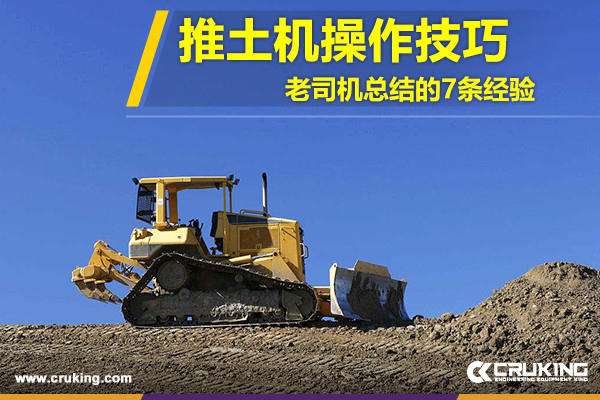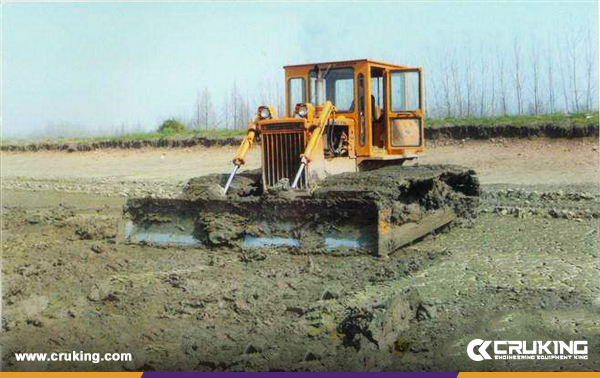Bulldozers are commonly used machines for earthmoving work and play an important role in construction sites, mines, agriculture, forestry and water conservation. Many people think that bulldozers are not as easy to drive as excavators and graders. This is not the case, although bulldozers are simple to operate, there are many working conditions to deal with, and older drivers need to master many construction operation skills.

Overall, there is one principle to master when operating a bulldozer: first gear bulldozing operation; avoid unilateral loads as much as possible, maintain a steady bulldozing force and minimise the distance travelled with an empty vehicle.
Tip 1: A large load at a slow speed is more efficient than a light load at a fast speed; try to maintain a large load when working with a bulldozer. Although the driving speed is slower, it can reduce the number of round trips and reduce the distance travelled by empty vehicles, which saves time and fuel consumption overall.
Tip 2: When it comes to long-distance bulldozing, work in sections from front to back. Starting from the very front, each section distance can be filled with materials, so that after pushing a section and then move back a section. This can reduce the distance the bulldozer travels with a full load, but also reduce the distance the bulldozer returns empty, improving efficiency and reducing fuel consumption.
Tip 3: Try to avoid material tumbling. Many people think that material tumbling in front of the bulldozer shovel looks very good and is a sign of strong bulldozer power. In fact, material tumbling will increase the wear and tear on the shovel, blades and blade angles, and will increase the fuel consumption of the bulldozer. The correct approach is to keep increasing the load to the maximum amount after the shovel has cut in to increase the efficiency of the job, and to lift the shovel slightly when the load is full and the material is about to roll over.
Tip 4: When bulldozing near the mountain, you must master the principle of "high outside and low inside", i.e. the side near the cliff should be higher and the side near the mountain should be lower to avoid accidental danger to the bulldozer. When pushing and unloading earth and rock under the cliff, the speed should be slow, pay attention to timely deceleration, and the bulldozer should not be pushed out of the edge of the cliff.

Tip 5: When bulldozing in muddy and soft conditions, the bulldozer is easy to get stuck, so the amount of bulldozing per shovel should not be too large, avoid stopping, shifting, steering and braking while driving, and use 2nd gear to bulldoze if necessary. If you encounter a slippery track, you can lift the shovel to reduce the amount of bulldozing, and if the bulldozer still can't move forward, you can put it in reverse gear to go backwards. Do not lift the shovel at this point to avoid the front of the bulldozer being overstressed and leaning forward, resulting in the front of the track sinking and the back of the track buckling. Do not steer at this point to prevent one side of the track from being overstressed and intensifying the trap. Once trapped, do not frequently increase the throttle to save yourself, to prevent the bulldozer from sinking deeper and deeper.

Tip 6: When pushing rocks buried in the ground, push from high to low, use low throttle at first, wait until the rocks are loose and then increase the throttle to push the rocks off. If it is a pile of stones or slag on the ground, push with the shovel close to the ground and the tracks should also be driven as close to the ground as possible. If you are clearing slag in a tunnel or underground hole, you should clear a path from the edge first and then push the slag out of the hole one by one from the edge towards the middle.

Tip 7: If a bulldozer is to cross a river by water, it should choose a place where the current is relatively swift and try not to cross at a place where the current is slow, because such places have a lot of silt in the river bed and are easy to get stuck. The depth of the river should not exceed the crankcase dipstick mouth of the bulldozer, use first gear or second gear to cross the river quickly with a large throttle, and try not to stop or reverse in the middle.







